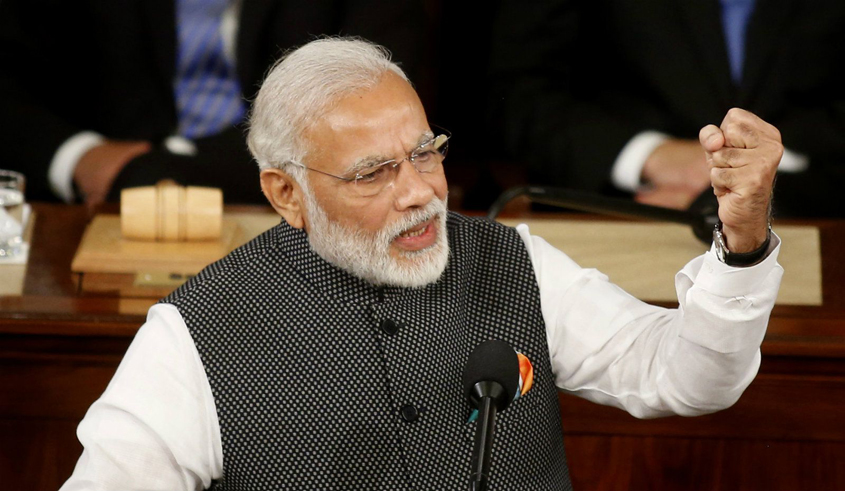In his first term, Modi put redistribution first. But, instead of splurging ever more sums of money on a flurry of schemes—the populist way—he chose to emphasise improved efficiency in the delivery of government goods and services to the poor—the reformist way.
Is Narendra Modi an economic reformer? Opinion is divided. It should not be. Perhaps it is because economists fail to recognise that the logic of economic reform is always political. Unlike economists, successful politicians must deal with trade-offs. They must pace reform. Even in authoritarian systems. In democracies, the judgement day for leaders comes much sooner, usually every four or five years. Hence, their calculations and strategy on what is feasible and at what pace would necessarily differ from their authoritarian counterparts. Deng Xiaoping and the Communist Party of China could wait a decade and a half before the fruits of their singularly growth-oriented structural reforms really began to show dividend. In democracies like India, it is difficult to play a waiting game without losing an election.
It is a common refrain among economists and commentators that the two most “reformist” governments in India were run by Prime Ministers Narasimha Rao and A.B. Vajpayee. Maybe, on some yardsticks, they were. But since neither won a full second term in office, it would be naïve to expect other politicians to readily adopt Messrs Rao and Vajpayee as role models, at least for longevity in office. For a politician, being praised by economists for being a reformist is no prize. Winning elections is.
Modi has adopted a different track from any post-1991 predecessor. For a start, he has deliberately adopted a long-time horizon. He did not campaign for the highest office to occupy it only for one term. Perhaps, his long experience as Chief Minister of Gujarat—for 13 years—proved to him in no uncertain terms the need for a long innings to make transformative changes in a noisy democracy and then be rewarded for it.
Even after taking a long view, there is the matter of sequencing. In his first term, Modi put redistribution first. But, instead of splurging ever more sums of money on a flurry of schemes—the populist way—he chose to emphasise improved efficiency in the delivery of government goods and services to the poor—the reformist way. There was a clear method which leveraged the now famous Jan Dhan, Aadhar and Mobile trinity. It required work to bring all of India’s 1.3 billion people into that formal system of bank accounts, possessing an Aadhar number and owning a mobile phone. The results were transformative, in a short time. For the first time since Independence, beneficiaries, not middlemen and sundry government officials, got their full share of cash transfers (pensions, scholarships) and benefits (gas cylinders, toilets, homes).
This is not to say that there were no attempts to implement structural reforms that would be growth enhancing—improving redistribution without busting the fisc is growth enhancing by itself. But the rampant cronyism that had preceded Modi’s arrival in office set a context. Not surprisingly, the two big structural reforms of Modi 1—GST and the bankruptcy code—were tailormade for that context, to bring back an element of fairness and level playing field in the market economy. GST would bring transparency, widen the tax base and make it tougher for businesses to operate in the black economy. Bankruptcy code would punish those who had siphoned off money loaned out by banks by having their businesses taken over by others; it would also give a second chance to businesses which were bona fide but had failed for non-corrupt reasons.
After winning a second term with an enhanced majority, Modi could have allowed his second term to either be more of the same or to drift like UPA2. But he shifted gear, with a series of reforms that every economist would have to admit are radical. The opening of coal sector to commercial mining is a major growth enhancing reform which broke the decades long monopoly of a PSU which had forced coal abundant India to become an importer of this critical fuel. The reform of coal will soon be followed by the liberalization of an over regulated mining sector, which will lead to a massive boost in growth and employment. The decision to implement market reforms in agriculture by abolishing APMC monopolies and amending the Essential Commodities Act is something most economists have long believed was necessary but impossible to implement. Now, it will transform agriculture and the lives of those dependent on that sector.
The move to allow private operators to run trains is also radical following the earlier decision to build stations in PPP mode. Like coal and agriculture, Railways was also untouched by growth enhancing reforms post 1991. The recent push to revive strategic disinvestment, which may result in the first privatization of a PSU in almost two decades, will comfortably propel Modi-2 into the league of the Rao and Vajpayee governments in terms of the quantum of growth enhancing reforms. And the government still has three and a half years of its term left.
If Modi does win a third term after two terms of reforming redistribution, restoring fairness to the market economy and implementing a range of structural reforms, he will be PM when the fruits of those efforts are visible widely, unlike Rao and Vajpayee. Then, he will be in a league of his own.
Dhiraj Nayyar is Chief Economist, Vedanta.

